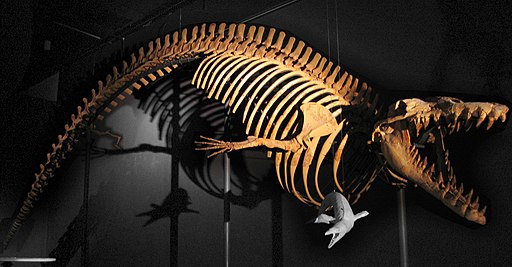Superregnum: Eukaryota
Cladus: Unikonta
Cladus: Opisthokonta
Cladus: Holozoa
Regnum: Animalia
Subregnum: Eumetazoa
Cladus: Bilateria
Cladus: Nephrozoa
Superphylum: Deuterostomia
Phylum: Chordata
Subphylum: Vertebrata
Infraphylum: Gnathostomata
Megaclassis: Osteichthyes
Cladus: Sarcopterygii
Cladus: Rhipidistia
Cladus: Tetrapodomorpha
Cladus: Eotetrapodiformes
Cladus: Elpistostegalia
Superclassis: Tetrapoda
Cladus: Reptiliomorpha
Cladus: Amniota
Cladus: Synapsida
Cladus: Eupelycosauria
Cladus: Sphenacodontia
Cladus: Sphenacodontoidea
Cladus: Therapsida
Cladus: Theriodontia
Subordo: Cynodontia
Infraordo: Eucynodontia
Cladus: Probainognathia
Cladus: Prozostrodontia
Cladus: Mammaliaformes
Classis: Mammalia
Subclassis: Trechnotheria
Infraclassis: Zatheria
Supercohors: Theria
Cohors: Eutheria
Infraclassis: Placentalia
Cladus: Boreoeutheria
Superordo: Laurasiatheria
Cladus: Euungulata
Ordo: Artiodactyla
Cladus: Artiofabula
Cladus: Cetruminantia
Subordo: Whippomorpha
Infraordo: Cetacea
Cladus: †Archaeoceti
Familia: †Basilosauridae
Genus: †Cynthiacetus
Species: †C. maxwelli – †C. peruvianus
Name
Cynthiacetus Uhen, 2005
Type species: Cynthiacetus maxwelli Uhen, 2005
References
Uhen, M.D. 2005. A new genus and species of archaeocete whale from Mississippi. Southeastern Geology 43 (3):157-172
Martinez-Cacers, M.; Muizon, M. 2011. A new basilosaurid (Cetacea, Pelagiceti) from the Lat eEocene to Early Oligocene Otuma Formation of Peru. Comptes Rendus Palevol in press DOI: 10.1016/j.crpv.2011.03.006
Cynthiacetus is an extinct genus of basilosaurid early whale that lived during the Late Eocene (Bartonian-Priabonian, 40.4 to 33.9 million years ago.)[1] Specimens have been found in the southeastern United States and Peru (Otuma Formation).[2]
Description
Skull of C. peruvianus at the MNHN, Paris
Cynthiacetus was named after the town of Cynthia, Mississippi, close to where the type specimen for the species C. maxwelli was discovered.
The skull of C. maxwelli was similar in size and morphology to that of Basilosaurus cetoides, but Cynthiacetus lacked the elongated vertebrae of Basilosaurus. Uhen 2005 erected the genus to avoid the nomen dubium Pontogeneus (which was based on poorly described and now vanished specimens).[3] Cynthiacetus was smaller than Masracetus.[4]
The South American species C. peruvianus, the first archaeocete to be described on that continent, mainly differs from C. maxwelli in the number of cuspids in the lower premolars, but it also has the greatest numbers of thoracic vertebrae (20).[2] The type specimen of C. peruvianus belonged to an adult individual measuring 9 m (30 ft) long.[5]
References
Cynthiacetus maxwelli in the Paleobiology Database. Retrieved July 2013.
Martínez-Cáceres & Muizon 2011, Abstract
Uhen 2008, p. 93
Gingerich 2007, p. 375
Martínez-Cáceres, M.; Lambert, O.; De Muizon, C. (2017). "The anatomy and phylogenetic affinities of Cynthiacetus peruvianus, a large Dorudon-like basilosaurid (Cetacea, Mammalia) from the late Eocene of Peru" (PDF). Geodiversitas, Museum National d’Histoire Naturelle Paris. 39 (1): 7–163. doi:10.5252/g2017n1a1.
Bibliography
Gingerich, Philip D (2007). "Stromerius nidensis, new archaeocete (Mammalia, Cetacea) from the Upper Eocene Qasr El-Sagha Formation, Fayum, Egypt" (PDF). Contributions from the Museum of Paleontology. 31 (13): 363–378. OCLC 214233870.
Martínez-Cáceres, Manuel; Muizon, Christian, de (2011). "A new basilosaurid (Cetacea, Pelagiceti) from the Late Eocene to Early Oligocene Otuma Formation of Peru". Comptes Rendus Palevol. 10 (7): 517–526. doi:10.1016/j.crpv.2011.03.006. OCLC 802202947.
Uhen, Mark D. (2005). "A new genus and species of archaeocete whale from Mississippi". Southeastern Geology. 43 (3): 157–172.
Uhen, Mark D. (2008). "Basilosaurids". In Perrin, William F.; Wursig, Bernd; J.; Thewissen, J.G.M. (eds.). Encyclopedia of Marine Mammals (2 ed.). Academic Press. pp. 91–94. ISBN 978-0-12-373553-9.
Retrieved from "http://en.wikipedia.org/"
All text is available under the terms of the GNU Free Documentation License


